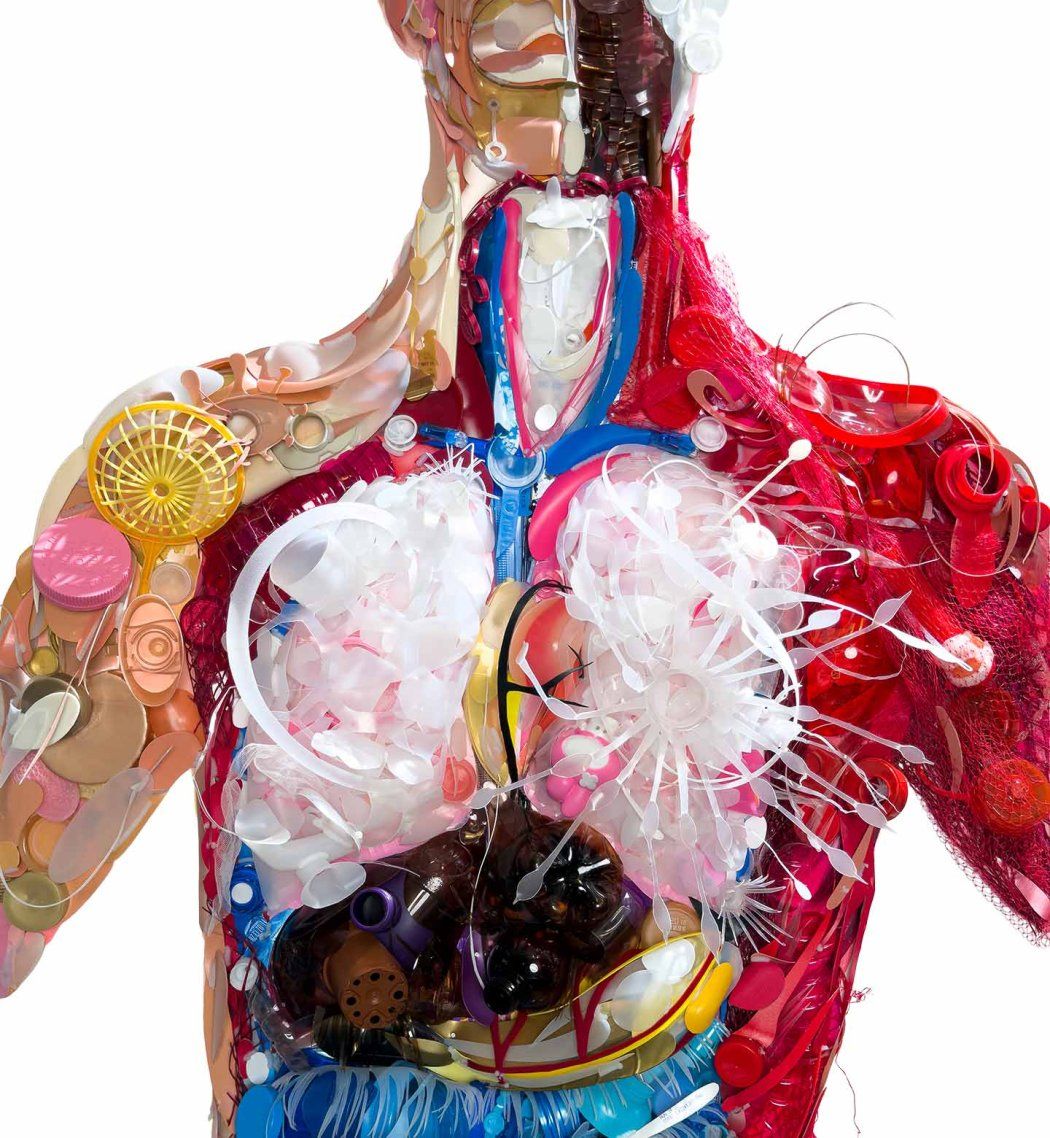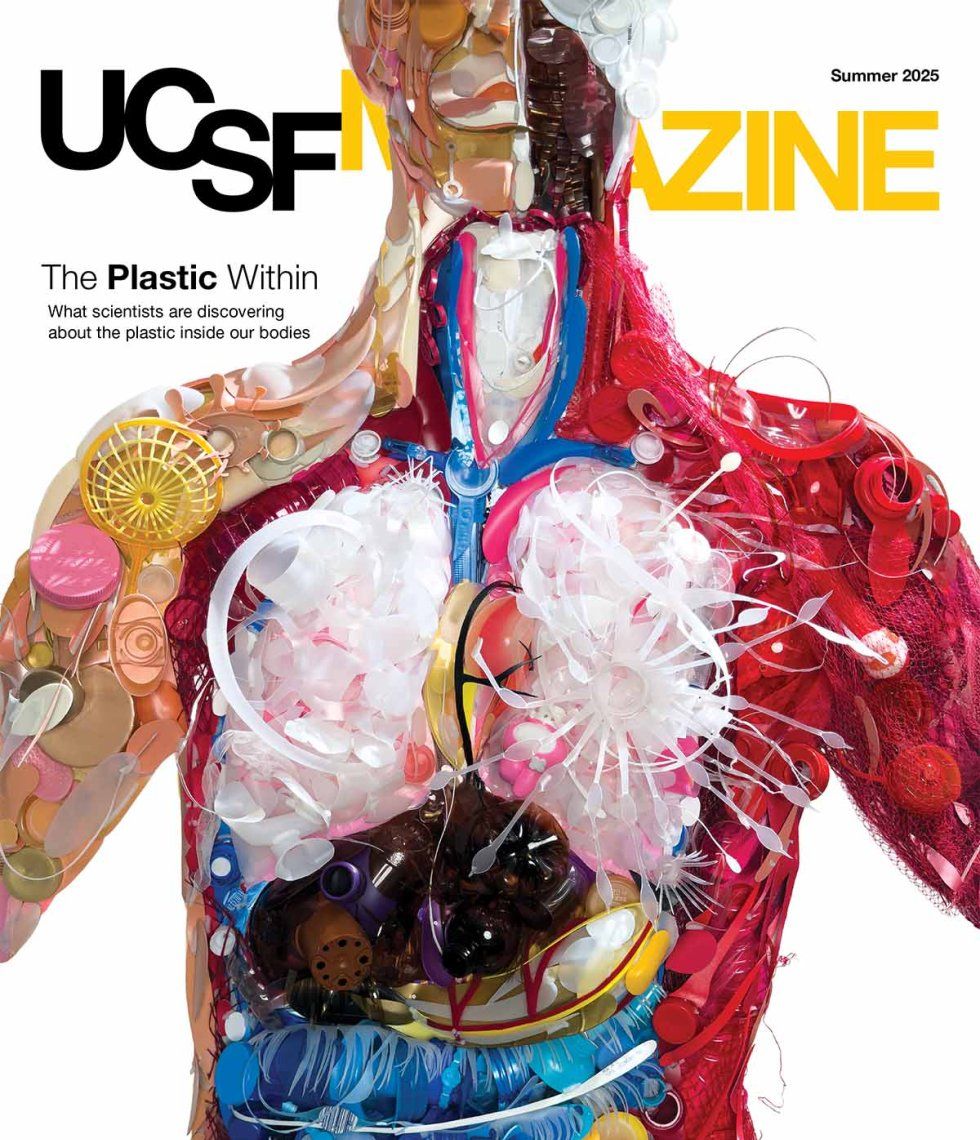
Every day, in a thousand ways, we take advantage of the utility of plastic. It’s in our clothes, our cars, our cosmetics, and so much more. But eventually, these products turn into something else: tiny synthetic particles that spread quite literally everywhere – into our air, our food, our water, even inside of us. We are only beginning to tease out what the presence of these microplastics means for our health – and what we can do about it.
Click a button or scroll down to start your journey:
What Makes Microplastic?
Plastic comes in a dizzying array of forms. It is the acrylic in sweaters and paint, the polyvinyl chloride in water pipes and credit cards, the polyethylene in milk jugs and toothpaste tubes, and on and on. These diverse materials are made of synthetic polymers, which are long chains of repeating chemical units mostly derived from fossil fuels. The attributes that have made plastics ubiquitous in modern life – they are inexpensive, can be readily engineered for all kinds of uses, and are long-lasting – have also turned them into an environmental menace. Not only do we use and discard a massive amount of plastic, but this waste also will hang around for a very long time. While plastics haven’t existed long enough for scientists to know for sure, they believe it could take hundreds to thousands of years for natural forces to break these materials down into ever-smaller fragments until only small molecules derived from their polymers remain.
Practical Products to Environmental Contaminants
Microplastic particles measure less than 5 millimeters, and many are even smaller.
Sometimes manufacturers intentionally add tiny plastic particles, such as microscopic capsules of fragrance in fabric softeners or compounds that enhance cosmetics.
Most form as a result of the disintegration of plastic products – when, for example, the asphalt erodes the rubber of your car’s tires or the elements degrade litter on the roadside.
(Or when the washing machine extracts fibers from your jacket—follow the fibers below.)
Down to Size
Microplastics are so small, we can swallow and inhale them. Some of the smallest particles, measuring perhaps one-thousandth the width of a human hair, can enter our bloodstream and pass through cell membranes. Click on the + buttons to learn more.
Down to Size
Microplastics are so small, we can swallow and inhale them. Some of the smallest particles, measuring perhaps one-thousandth the width of a human hair, can enter our bloodstream and pass through cell membranes. Click on the + buttons to learn more.
Don’t Count on Recycling
The global plastic recycling rate is a dismal 9%, according to the Organisation for Economic Cooperation and Development (OECD). But the problem likely runs deeper than just a lack of effort. California has sued the plastic maker ExxonMobil, claiming the company “falsely promoted all plastic as recyclable, when in fact the vast majority of plastic products are not and likely cannot be recycled.”
Journey From a Jacket...
Wear clothes made of synthetic textiles – like polyester, spandex, acrylic, or nylon – and you’re wearing plastic. From the moment your soft fleece jacket, wrinkle-resistant dress, or trendy new top is manufactured, and every time you wear or wash it, these items release microplastics.
Manufacturing
Making synthetic fabric, including that used for clothes, creates microplastics. Microplastic fibers are present throughout the production of polyester yarn, for example.
Laundry
Washing clothing and other textiles made of synthetic fabric extracts microfibers that then travel down the drain.
Packaging
Clear wrapping and other packaging for all types of apparel generate a massive amount of plastic pollution.

More on the Way
Global plastic use is projected to nearly triple between 2019 and 2060, according to the OECD.
Wear and Tear
Simply rubbing synthetic fabric produces plastic microfibers.
Drying
Running synthetic fabric through the dryer produces microfibers that the machine then expels through its vents.
Disposal
After its useful life is over, synthetic apparel typically ends up as landfill, is incinerated, or is carried by rivers into the ocean.
Jacket Photo: Tarzhanova; Cropped micrograph of fleece fibers: © 2023 Barbora Pinlova and Bernd Nowack, published by Elsevier Ltd., Used under a Creative Commons 4.0 License
Journey From a Jacket...
Wear clothes made of synthetic textiles – like polyester, spandex, acrylic, or nylon – and you’re wearing plastic. From the moment your soft fleece jacket, wrinkle-resistant dress, or trendy new top is manufactured, and every time you wear or wash it, these items release microplastics.
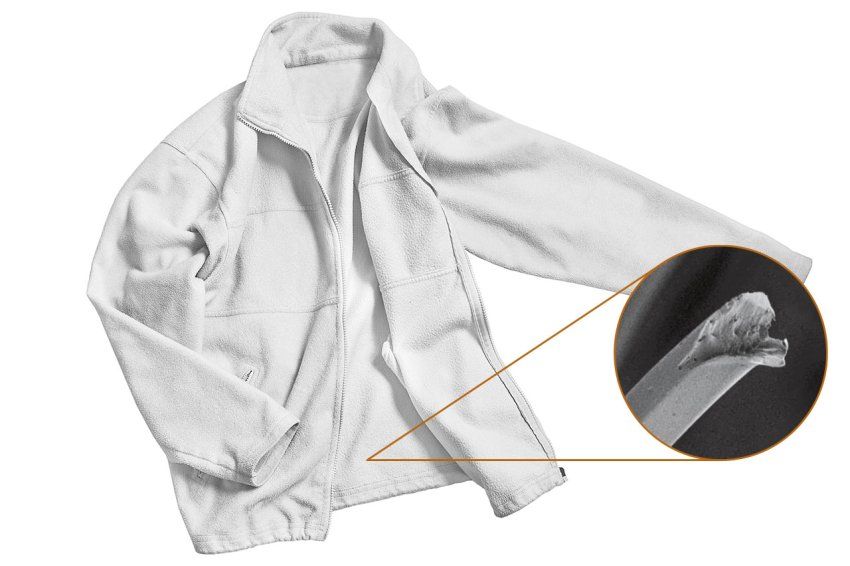
Manufacturing
Making synthetic fabric, including that used for clothes, creates microplastics. Microplastic fibers are present throughout the production of polyester yarn, for example.
Laundry
Washing clothing and other textiles made of synthetic fabric extracts microfibers that then travel down the drain.
Packaging
Clear wrapping and other packaging for all types of apparel generate a massive amount of plastic pollution.
More on the Way
Global plastic use is projected to nearly triple between 2019 and 2060, according to the OECD.
Wear and Tear
Simply rubbing synthetic fabric produces plastic microfibers.
Drying
Running synthetic fabric through the dryer produces microfibers that the machine then expels through its vents.
Disposal
After its useful life is over, synthetic apparel typically ends up as landfill, is incinerated, or is carried by rivers into the ocean.
Jacket Photo: Tarzhanova; Cropped micrograph of fleece fibers: © 2023 Barbora Pinlova and Bernd Nowack, published by Elsevier Ltd., Used under a Creative Commons 4.0 License
...To Everywhere Else
Air
A cubic meter of air can contain over 1,000 particles of microplastic, especially indoors.
Water
While bottled water generally contains more microplastics, they also show up in tap water.
Soil
Microplastics have been detected in many types of soil – in cities, farms, and elsewhere.
Food
Microplastics have turned up in fruits, vegetables, salt, rice, and proteins, especially in highly processed foods.
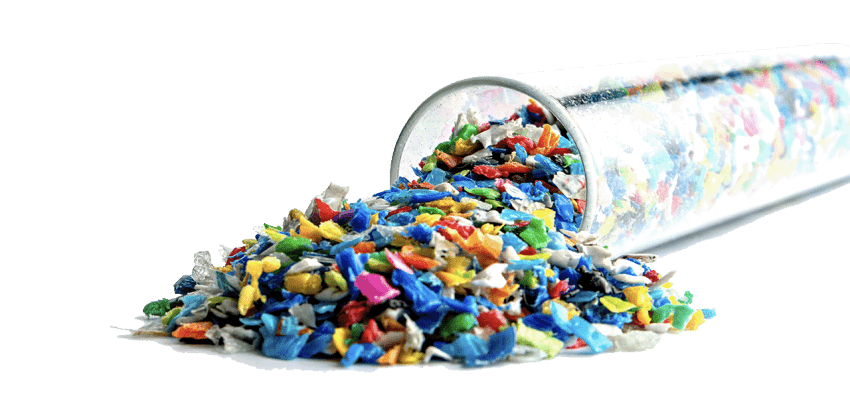
What Do Microplastics Mean for Our Health?
Microplastics have been found throughout the human body – in our brain and blood, in semen, and in breast milk. Science has yet to conclusively link these particles to any disease, but the emerging evidence alarms experts like Tracey Woodruff, PhD ’91, MPH, director of UC San Francisco’s Program on Reproductive Health and the Environment (PRHE) and the Alison S. Carlson Professor, who studies the health effects of environmental contaminants. To get a handle on what is known so far, she and colleagues at UCSF and the University of Sydney recently assessed studies of microplastics’ health effects on three physiological systems – digestion, respiration, and reproduction – that sustain us as individuals and a species.
Digestion
Whether shed by takeout packaging or inadvertently introduced into food in other ways, plastic has become an inevitable part of our diet. To understand how these particles might affect the digestive system, Woodruff and her team focused on the intestines, including the colon. They reviewed the work of other scientists and found credible evidence linking microplastics to changes in these organs in animals. These included alterations to the immune system that may suppress its ability to properly protect the gut, while potentially promoting chronic inflammation. Although researchers don’t fully understand the extent to which microplastics in the gut harm human health, such changes could increase the risk of disease, says Woodruff.
Respiration
Just as they can sneak into food, fragments of plastic can linger in the air. Like bits of dust, smoke, or pollen, microplastics can travel into our airways and the deepest parts of our lungs. Studies in animals indicate that exposure to them may damage our lung tissue and impair our breathing, according to Woodruff’s team. The damage associated with the particles includes scarring known as fibrosis. Microplastics appear to promote two related processes that drive fibrosis: chronic inflammation and oxidative stress. The latter, which is the biochemical equivalent of wear and tear, promotes inflammation and accelerates aging.
UCSF Findings
Cause for Concern
In both the intestines and the lungs, Woodruff’s team categorized microplastics as a “suspected” hazard. This designation raises a red flag, but with the caveat that scientists don’t fully understand the effects. But uncertainty doesn’t mean we can dismiss the problem, notes Woodruff. “People will say, ‘Well, your study said it was suspected.’ That’s true,” she says. “But should we wait until it’s too late? Because we are being exposed to them right now.”
A Cancer Connection?
Certain biological changes – including chronic inflammation, immune suppression, and oxidative stress – promote the development of cancer. Evidence of these changes in the colon and lungs suggests microplastics could contribute to malignancies in these organs, Woodruff’s team concluded.
Cellular Shifts
Once they infiltrate our body, our tissues, and even our cells, microplastics can trigger changes that may be harmful. Click on the + buttons to learn more.
Should You Test?
Test kits promise to assess the microplastics in your water, in your blood, and elsewhere
Dimitri Abrahamsson, PhD, an environmental chemist and assistant professor of obstetrics, gynecology, and reproductive sciences at UCSF, cautions against test kits. He notes that plastics on your skin or in the environment where you collect a sample can contaminate it. “It is really challenging for us in the lab to get accurate measurements,” he says. “I think it would be 100 times more difficult for someone at home.”
Still Many Questions
Particles’ size and shape, chemical additives, the polymer type, and other factors likely influence microplastics’ biological effects. Researchers are trying to figure out how.
Not Just Plastics
Scientists worry that microplastics release harmful chemicals
Microplastics can physically interfere with biological processes – and that may not be all. Many plastics contain harmful chemical additives that researchers worry can leach out into our tissues.
These contaminants include plastic-softening substances called phthalates and PFAS compounds, which repel water and stains. Both are known to cause problems with fertility, development, and metabolism.
Well-known substances like these may just be the tip of the iceberg, however. UCSF’s Dimitri Abrahamsson is more concerned about the chemical hazards that we have yet to identify.
Scientists haven’t had much opportunity to study the health effects of some additives, such as those that protect plastics from ultraviolet radiation. And they are completely ignorant of the existence of others, since manufacturers in the U.S. are not required to disclose the substances they put into plastics nor to make them available for others to purchase for studies.
And because it takes a long time to conduct studies, scientists’ findings may come too late, after the chemicals that concern them have already infiltrated the environment and our bodies.
He and his colleagues recently found elevated levels of 1,4-cyclohexanedicarboxylic acid – an understudied chemical used in plastic production – in the blood of mothers whose babies were born prematurely. Only limited studies in animals have explored the toxicity of this chemical, and Abrahamsson’s lab could not find any research evaluating its effects on reproduction and development.
“We’re trying to catch up with chemical production, but we just can’t,” Abrahamsson says. “If [some of these chemicals] are harmful and we’re unaware of them, that’s a little bit scary.”
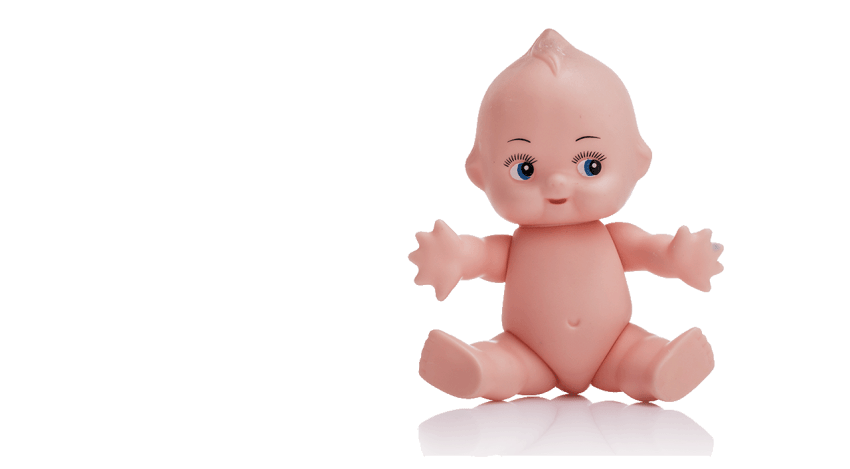
How Will Microplastics Affect the Next Generation?
The accumulation of microplastics in our bodies could have consequences far beyond damage to our own health. Early evidence suggests they may also impair processes necessary for conception and pregnancy, and potentially lead to lifelong difficulties for some children.
A Threat to Fertility?
Our intestines and lungs are, by the nature of their jobs, destined to encounter microplastics. While further from the onslaught, our reproductive systems are particularly vulnerable to disturbance. Research has already established that exposure to contaminants – such as synthetic chemicals that the body mistakes for hormones – readily interferes with fertility and fetal development. Based on previous work with animals, Woodruff’s team found good reason to suspect that microplastics disrupt reproductive hormones and ovulation (the release of eggs). But they saw the most reason for concern with sperm, which appear to decrease in quality and quantity in the presence of these particles.
Plastic in the Placenta
In human tissues and cells, researchers explore the implications for pregnancy
Pregnancy depends on the placenta. This temporary organ ferries nutrients and oxygen from mother to fetus, while also removing waste, protecting against illness, and secreting hormones essential for maintaining a healthy pregnancy.
Microplastics are now routinely detected in placentas. Joshua Robinson, PhD, a developmental and reproductive toxicologist and an associate professor of obstetrics, gynecology, and reproductive sciences at UCSF, is among those working to understand what this means for mothers and babies.
“We’re concerned they could disrupt the placenta’s normal function and cause stress, which may contribute to pregnancy complications,” he says. “That matters because common complications can have traumatic, long-term effects on the child.”
One such complication is preeclampsia, which has already been linked to certain chemicals used in plastics. In this condition, a poorly functioning placenta fails to supply the fetus with adequate oxygen and nutrition. This deprivation can lead to serious consequences, including stillbirth and lifelong neurological problems for the child.
Studies exploring the health effects of contaminants like microplastics often employ cell lines or lab animals, such as mice. Robinson’s team takes a different approach, using real bits of human chorionic villi – the fingerlike structures in the placenta that form the interface between the maternal and fetal blood. “It’s a little closer to what interests us,” he says.
His lab has begun experiments exploring how the size of plastic particles affects their ability to infiltrate the chorionic villi. Once particles enter it, the researchers examine whether they alter the tissue’s physical structure or molecular expression. He also hopes to learn how other variables, such as the type of plastic or the presence of chemical contaminants, influence the effects of microplastics.
Although early studies suggest microplastics may pose risks to the placenta and overall health, “there’s just a lot more to unpack,” Robinson says. “Scientists like me will have plenty of work to do in the coming years.”
Better Off Without Plastics?
No, says Woodruff. Instead, “we have to consider what’s really essential.” Plastics are crucial for some medical equipment, like IV bags, but toxic additives such as phthalates should be removed. In many other cases, “there’s a lot of plastics we don’t need,” she says.
What We Can Do
Plastic use is increasing, but that doesn’t mean our fate is sealed like a single-use package.
Woodruff became interested in microplastics through her work on the toxic contaminants, like PFAS and phthalates, that have become deeply integrated into modern life. Through the programs she leads at UCSF, including PRHE and the recently opened Center to End Corporate Harm, Woodruff and her colleagues are studying the damage microplastics cause and advocating for change. For example, she and her team assessed their health effects to inform the state legislature, an effort sponsored by the California State Policy Evidence Consortium.
Over time, she hopes to see plastic use fall dramatically. But since most plastics are produced from oil and natural gas, she expects to encounter resistance from the fossil fuel industry.
“We will have to deal with a large, powerful financial incentive that’s working against us,” she says.
In the end, Woodruff envisions a shift away from disposable plastic products that would play out in many small ways. For instance, instead of serving food with plastic plates, cups, and utensils all meant for the trash, restaurants could partner with a contract business that specializes in collecting, cleaning, and returning dishes.
“You could create a whole new economy around just tableware,” she says. “[Changes like this are] going to be more expensive in the beginning. But that’s what we need: new infrastructure that’s based on reuse.”
5 Ways to Make a Difference
What you can do when the problem is much bigger than any of us
Reducing microplastic pollution means cutting our collective dependence on plastics and making it clear to companies and governments that we find the risk they pose unacceptable.
- Vote with your wallet. Companies respond to consumer pressure. Let brands and businesses know you don’t want to buy products that put more microplastics out into the world.
- Vote at the ballot box. Although the federal government has trumpeted rollbacks of health and environmental programs, state and local governments also have power to act. Some states and municipalities already require companies to reduce single-use plastic in their products and restrict the use of single-use disposable plastic bags.
- Express your opinion. Your voice matters. Become active on social media, write letters to the editor, or contact your political representatives.
- Support good work. Numerous nonprofits are already addressing microplastic pollution. Woodruff and her colleagues have partnered with Breast Cancer Prevention Partners, Beyond Plastics, the Plastic Pollution Coalition, and the Green Science Policy Institute. Supporting these organizations and others like them helps them advocate for the concerns you share.
- Make personal connections. Microplastics affect everyone. Sharing concerns, especially with people from different backgrounds and political perspectives, can help us find much-needed common ground.
Reasons for Hope
Why fighting plastic pollution is NOT a lost cause
Woodruff takes the most heart in the momentum the anti-plastics movement is picking up outside the U.S. Rwanda and Peru, for example, have called for a legally binding international treaty to end plastic pollution. Likewise, she notes that scientists in China have led research on microplastics. “It does give me hope that other countries see the importance of this issue and will elevate it,” she says.
It’s worth noting, too, that we’ve solved a big environmental challenge before: The hole in the atmosphere’s protective ozone layer continues to heal, thanks to a global ban on ozone-depleting chlorofluorocarbons.
Although anti-plastics progress has been limited in the U.S., our nation has taken some steps in the right direction. These include an FDA ban on microbeads in toothpaste and certain cosmetics and a voluntary commitment by manufacturers to stop using grease-proofing PFAS in food packaging.
Meanwhile, states and municipalities are stepping up. California, for example, has mandated testing drinking water for microplastics and is considering banning microplastics in most cosmetics and cleaning products. And proposed legislation in Rhode Island would prohibit manufacturers from intentionally adding microplastics to their products.
Better materials may one day become widely available. In the past, regulations prohibiting certain substances have sparked innovation, according to Abrahamsson. For example, when leaded additives were phased out, gasoline had to be reformulated, leading to cleaner air and lower levels of lead, which can interfere with development, in children’s blood.
And keep in mind that others share this concern. People don’t want plastic particles and plastic-related contaminants accumulating in their bodies, Woodruff says. “No matter who you are or where you live in the U.S., people are concerned about their health.”
5 Ways to Manage Microplastic Exposure (Without Driving Yourself Nuts)
Microplastics are everywhere. And while you can’t completely avoid them or the potentially harmful chemicals they carry, you can take steps to reduce your exposure.
1
Don’t microwave food in plastic. Heating a container causes chemicals from the plastic to leach into your food. Hot water in the dishwasher can also cause plastics to break down.
2
Avoid or gradually replace plastic products. Save glass jars for storage. Carry a canvas bag, metal or bamboo utensils, and a reusable water bottle. Buy natural textiles when possible.
“Don’t do everything at once. It’s a marathon, not a sprint.”
– Tracey Woodruff
3
Clean regularly. Microplastics can collect in dust. Vacuum with a high-grade HEPA filter, wet-mop, and dust with a particle-trapping microfiber rag to remove them.
4
Wash your hands and watch what you eat. Washing removes any unwanted substances. Eat more fresh, homemade food. Include lots of fruits and vegetables but less meat.
5
Take your concerns to work. Encourage your employer to reduce disposable plastic use by, for example, swapping plastic utensils in the office kitchen for metal ones from a thrift store.
Get more detailed advice by checking out PRHE’s Toxic Matters site or UCSF’s Western States Pediatric Environmental Health Specialty Unit.

